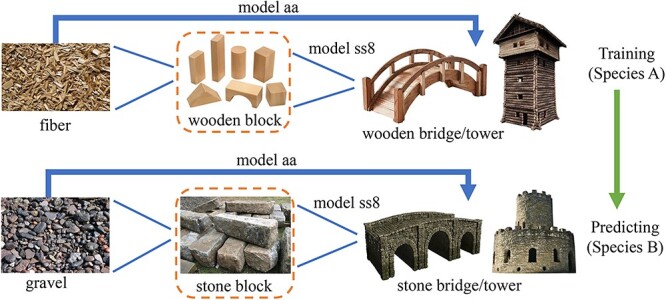Home > Publications
Fu V Song, Jiaqi Su, Sixing Huang, Neng Zhang, Kaiyue Li, Ming Ni, and Maofu Liao
doi:10.1093/bib/bbae196
Song FV, Su J, Huang S, Zhang N, Li K, Ni M, Liao M. DeepSS2GO: protein function prediction from secondary structure. Brief Bioinform. 2024 Mar 27;25(3):bbae196. doi: 10.1093/bib/bbae196. PMID: 38701416; PMCID: PMC11066904.
Predicting protein function is crucial for understanding biological life processes, preventing diseases and developing new drug targets. In recent years, methods based on sequence, structure and biological networks for protein function annotation have been extensively researched. Although obtaining a protein in three-dimensional structure through experimental or computational methods enhances the accuracy of function prediction, the sheer volume of proteins sequenced by high-throughput technologies presents a significant challenge. To address this issue, we introduce a deep neural network model DeepSS2GO (Secondary Structure to Gene Ontology). It is a predictor incorporating secondary structure features along with primary sequence and homology information. The algorithm expertly combines the speed of sequence-based information with the accuracy of structure-based features while streamlining the redundant data in primary sequences and bypassing the time-consuming challenges of tertiary structure analysis. The results show that the prediction performance surpasses state-of-the-art algorithms. It has the ability to predict key functions by effectively utilizing secondary structure information, rather than broadly predicting general Gene Ontology terms. Additionally, DeepSS2GO predicts five times faster than advanced algorithms, making it highly applicable to massive sequencing data. The source code and trained models are available at https://github.com/orca233/DeepSS2GO.
